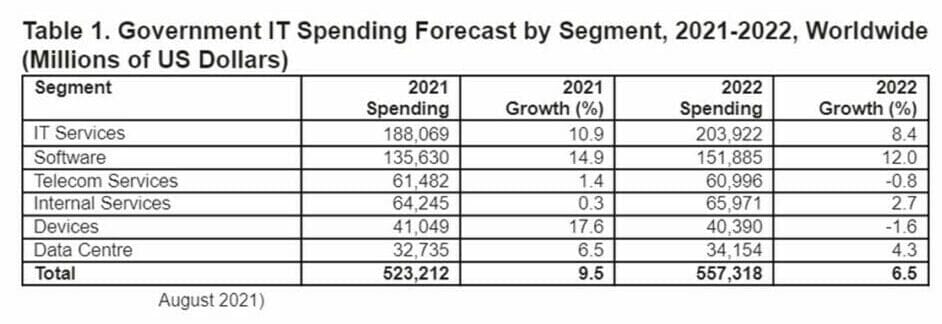In 2022, increased investments in digital technologies will see 64% of total government IT spending worldwide go towards IT services and software, to improve responsiveness and resilience of public services, according to Gartner.
These are set to include investments in enhancing customer and employee experience, strengthening analytical capabilities, and scaling operational agility.
IT infrastructure and applications modernisation, alongside digital government transformation, will remain high government priorities next year.
Additionally, COVID-19 economic assistance funding packages, such as the American Rescue Plan Act in March 2021 and NextGenEU, will drive further funding on digital enablement, including support for sustainable growth, social programs, education, cyber security, and digital inclusion.
How modern data protection best practices can improve the security of local councils
“Governments will continue to accelerate investments in digital technologies to respond and recover from the continuing evolution of public health uncertainties due to the COVID-19 pandemic,” said Irma Fabular, research vice-president at Gartner.
“The disruptions caused by the pandemic have also reinforced a key digital government tenet, which is public policy and technology are inseparable.”

Increased adoption of cloud strategies and citizen digital identity
There is also set to be an increase in adoption of cloud strategies and citizen digital identity among governments worldwide, the latter being a critical element to digital government transformation.
Gartner estimates that by 2025, over 50% of government agencies will have modernised critical core legacy applications to improve resilience and agility.
Fabular continued: “Governments are rethinking their public cloud strategies to accelerate IT modernisation, improve efficiencies and increase data security.
“To raise the chances for greater adoption of digital identity, governments must treat privacy, security and user convenience as critical success factors.”








